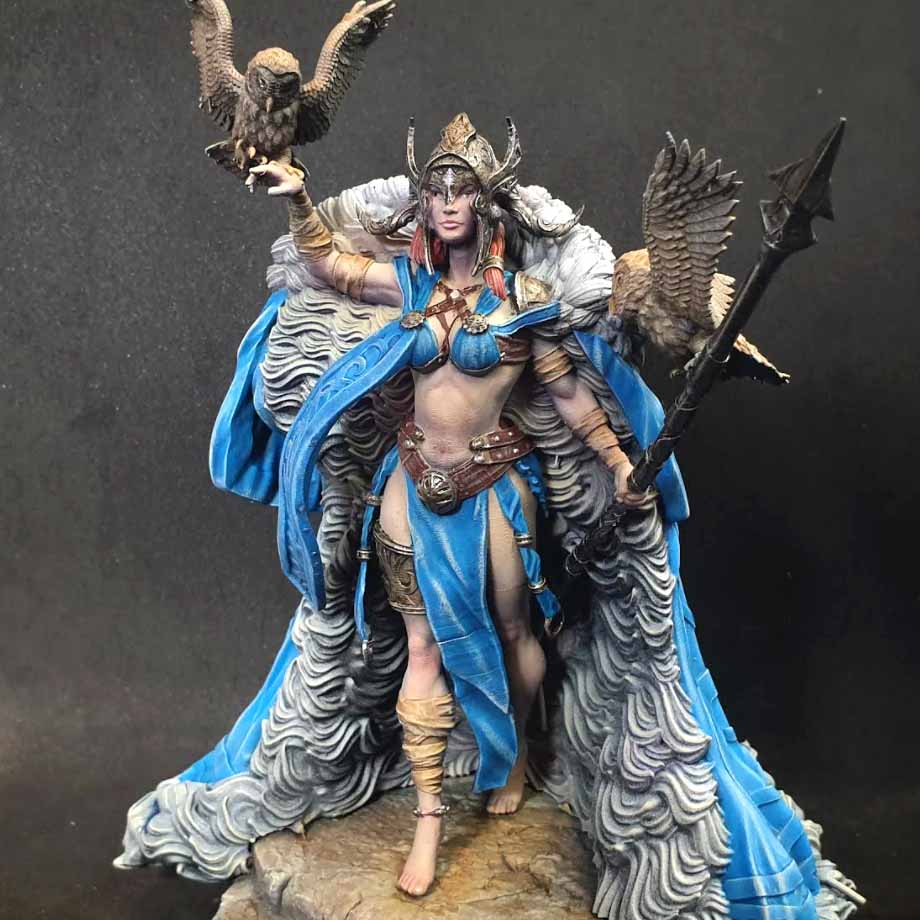
Hi! In this article, we are going to look at this amazing – but huge – ‘Frost Giant Queen’ model from our friends over at Archvillain Games (@archvilliangames). AVG design ready-to-3D-print miniatures, and very kindly sent this one to us. For hobbyists painting miniatures at the 28mm or 32mm scale, scales like 75mm can seem too difficult to even try. But it doesn’t have to be! And in fact, can be very rewarding- especially painting Archvillain Games miniatures like this one.
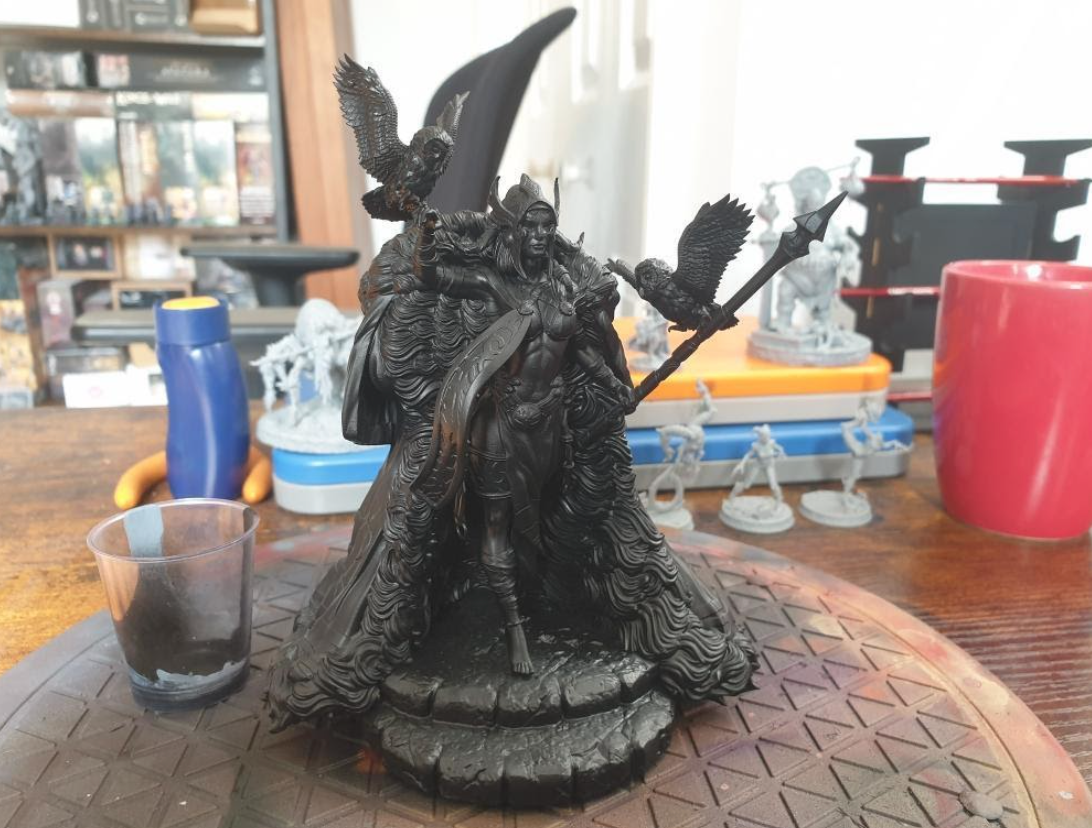
So, let us start at the beginning. Here is the model, fresh off the printer! Appropriately for a Queen of Giants, it is huge! But it is a beautiful sculpt, packed with details, and AVG have a great range to choose from. I spray-primed the model with black primer. This is important in painting miniatures to help the subsequent layers of acrylic paint stick to the model. Spray priming or airbrush priming will also speed this stage up, which will help a lot if you are feeling nervous about such a large model! You can of course prime and basecoat your models with a brush, and if you do I would recommend one with a large belly and a good tip like the RGG brush size 2.
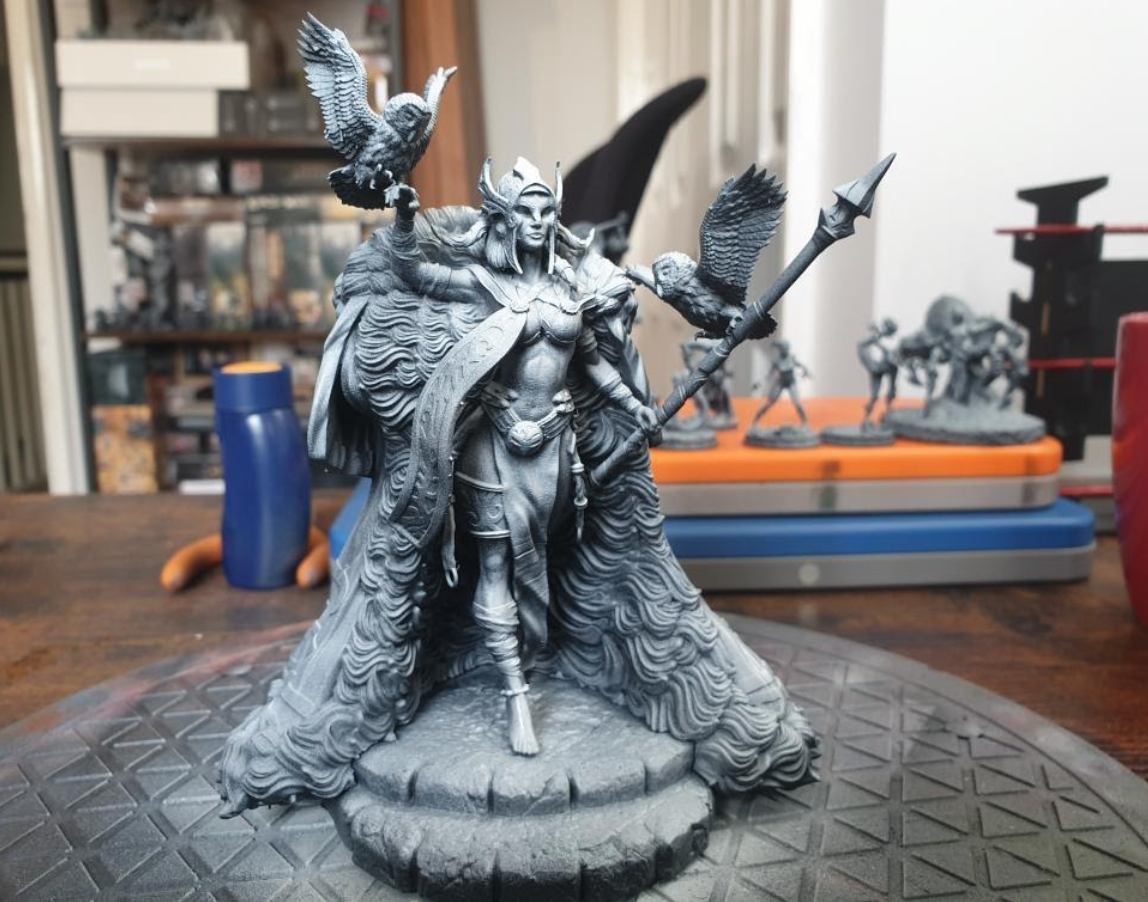
Next, and this stage is optional, I sprayed the model with white from directly overhead. This helps show where all the highlights should go, whilst keeping all the shadows black from the primer.
You might have heard of this technique being called ‘Zenithal Priming’, and it can be really useful! Because I used an aerosol (or ‘rattle can’) it is the minimum of time and effort to achieve.
If you don’t have any spray paint, or if you don’t use an airbrush, that’s ok! Use a drybrush technique – the RGG drybrush in straight-down strokes will achieve a similar effect. See how it really highlights all the raised areas where the light would fall in most concentration? It is also a quick way to have greys like furs and stonework. Work smarter, not harder!
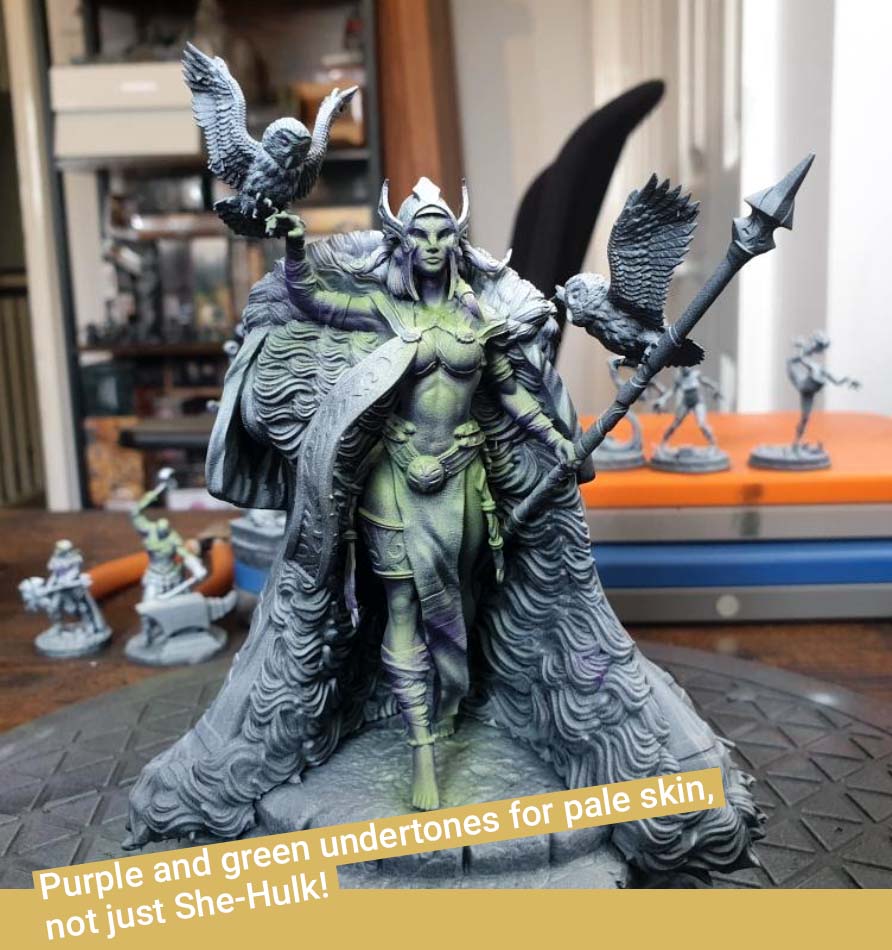
With such a large model, or when painting any miniature, it is important to decide ahead of time what you would like to focus on. Unless it is a competition entry, it is more realistic to set achievable and ordinary goals for your scale model. What I like to call for fun and a therapeutic hobby. After all great painters don't 'knock out' a canvas masterpiece every day, but they might fill hundreds of portfolios with sketches and studies, and still learn and enjoy the process.
What is going to be the thing that draws the viewer’s eye? Most often, this is the face on a miniature. Here, the Queen’s face is mostly obscured by her helmet. So I decided that the skin was going to be the feature – and technical area- I wanted to focus on when painting. So I would spend more time and effort on this compared to say, the fur cloak or the owls. I have used a dark purple and lime green as pre-shades for the skin.
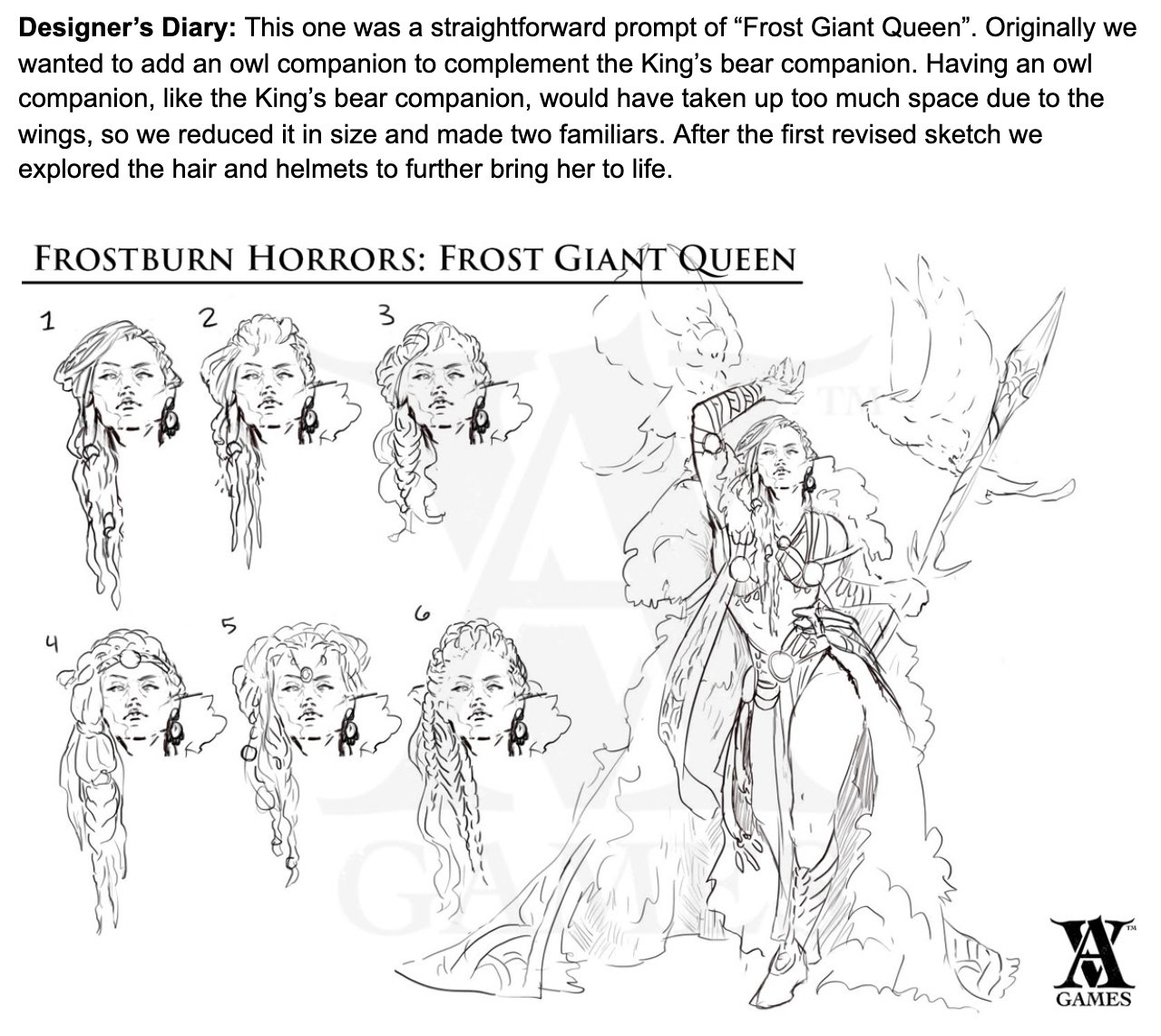
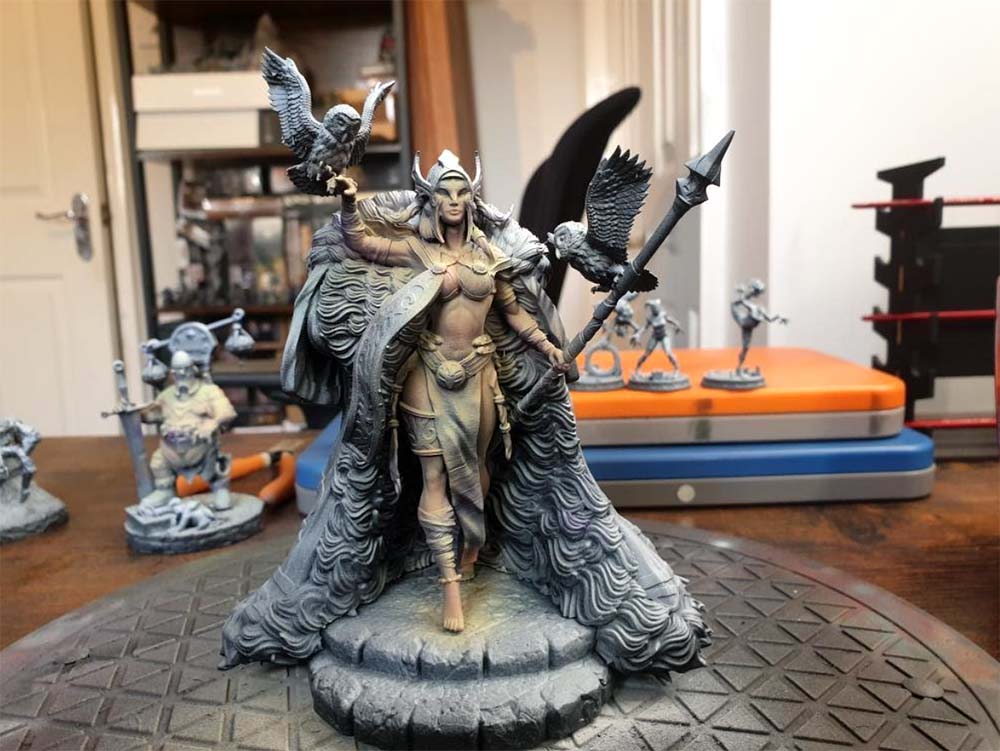
It can be harder to see in pictures, but purple and green provide natural shadow and highlights- if you look at pale skin in real life, it is not really one uniform ‘flesh’ colour, and this will stop it looking flat and uninteresting.
Just make sure you keep the layers thin! A thin purple wash or glaze in the recesses, or a similarly thin green-blue one, can bring the effect back if your flesh paint obscured it too much. Also I like to add a thinned red to areas like knees, elbows, and knuckles- it adds interest and represents where blood is closer to the surface.
I find the RGG size 2 brush is great for jobs like that, as it has a big reservoir (or ‘well’) but a good point, which means I have the time and manoeuvrability to glaze into all the nooks and crannies! And a Redgrass Creative wet palette is invaluable to keep that acrylic paint workable whilst out of the pot! As you can see, I had two on the go!
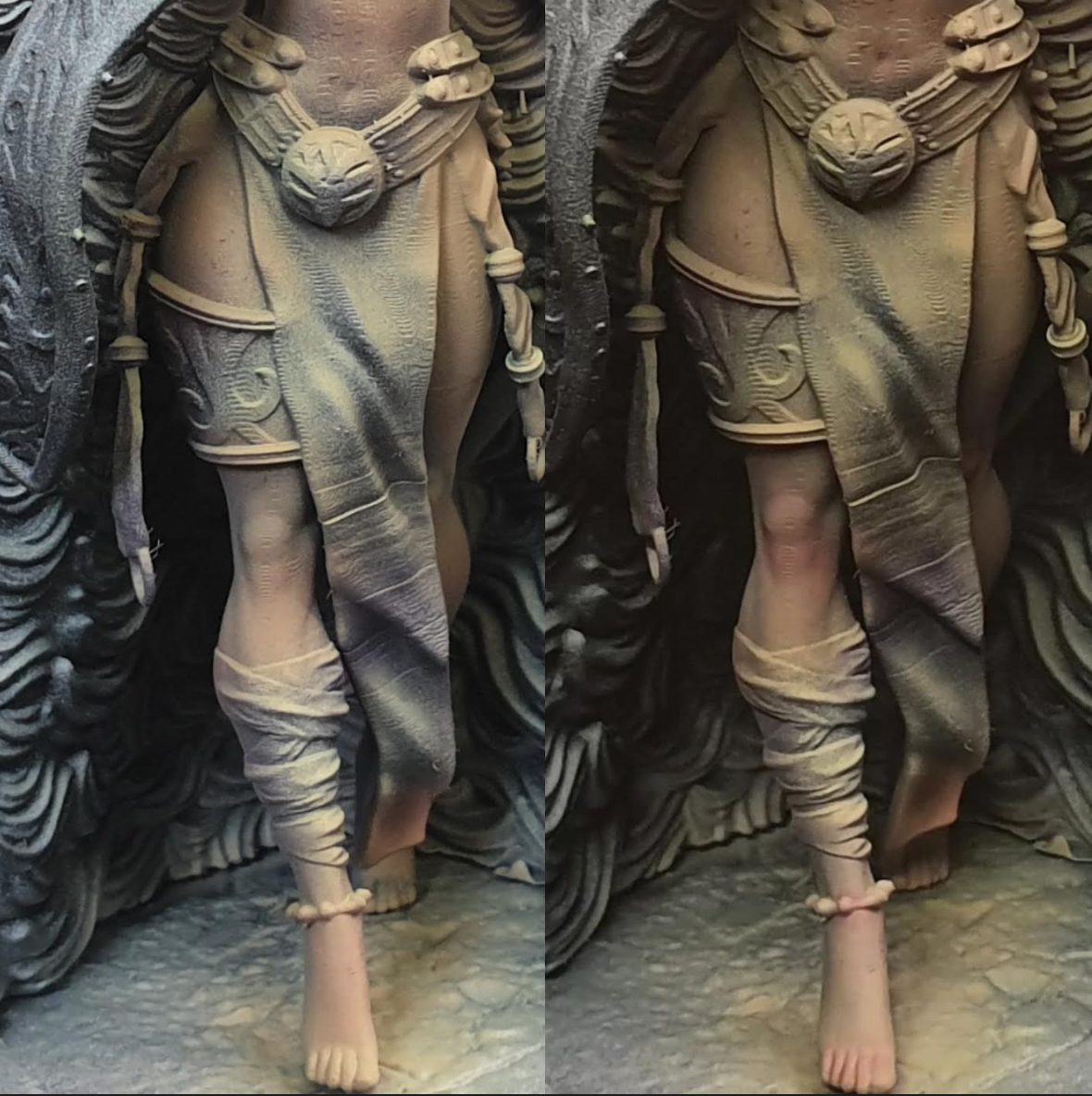

A RGG size 2 will cover large cloak areas relatively quickly. Also think ‘what colours are appropriate?’ The Frost Giant Queen from our friends at Archvillain Games makes me think icy/nordic vibes. I chose a mid-tone blue which is regal and cold, but also easy to highlight or recess shade.
I chose an antique bronze for metal parts as gold is too flashy, and silver wouldn’t contrast enough. A red-brown for the leathers, and orange for the hair offer more visual interest and contrast. Mostly I used the Size 2, but for smaller parts like the leather straps I used the Redgrass size 00, as I wanted more control. I used a ‘smokey’ shade paint on the cloth straight over the zenithal, a good effect but minimal effort! I used a brown shade on the owls and the colour modulation it has achieved looks really natural.
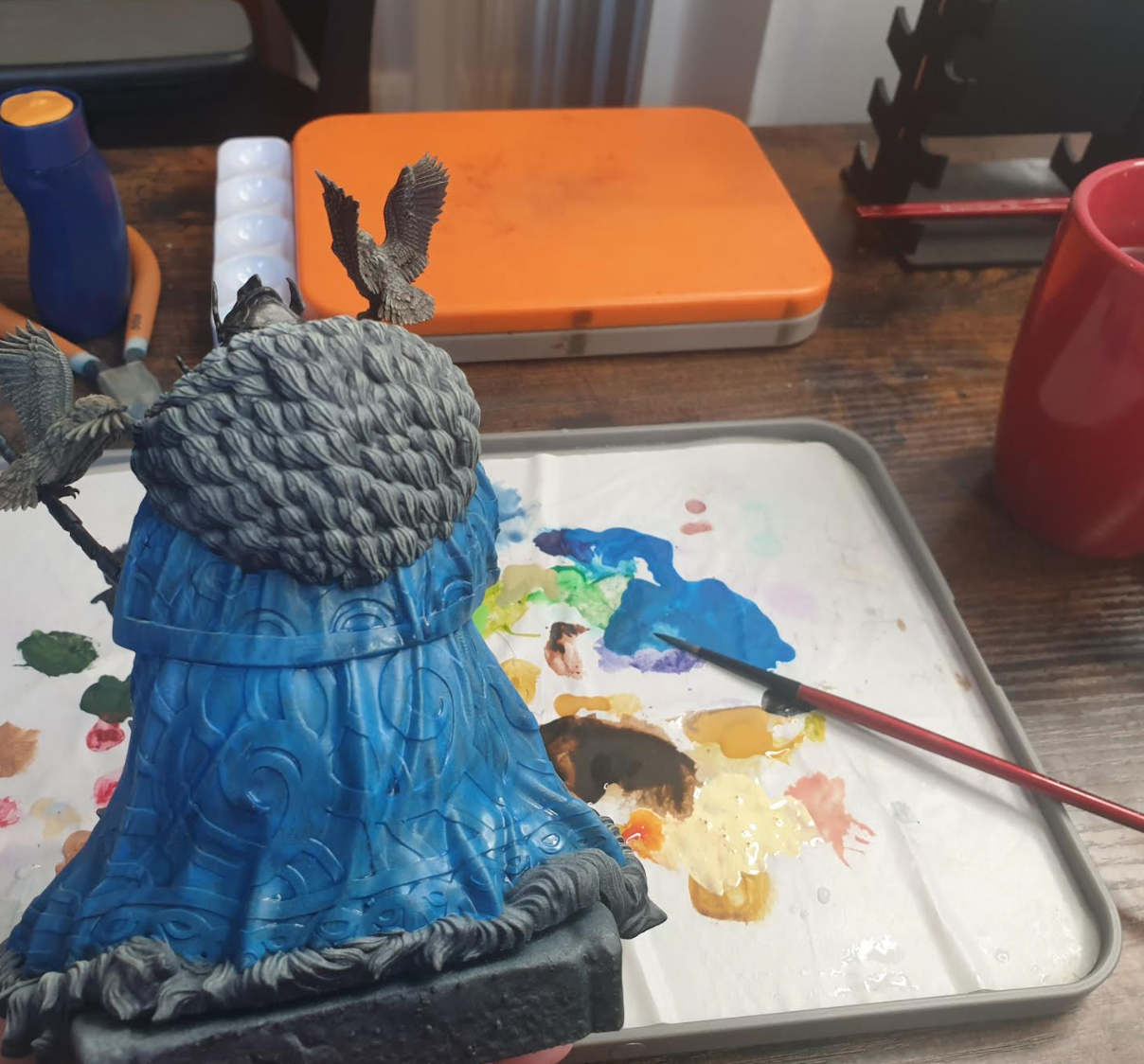
A wet palette is invaluable when painting large areas - Acrylics paints use dry out so fast without one!
James
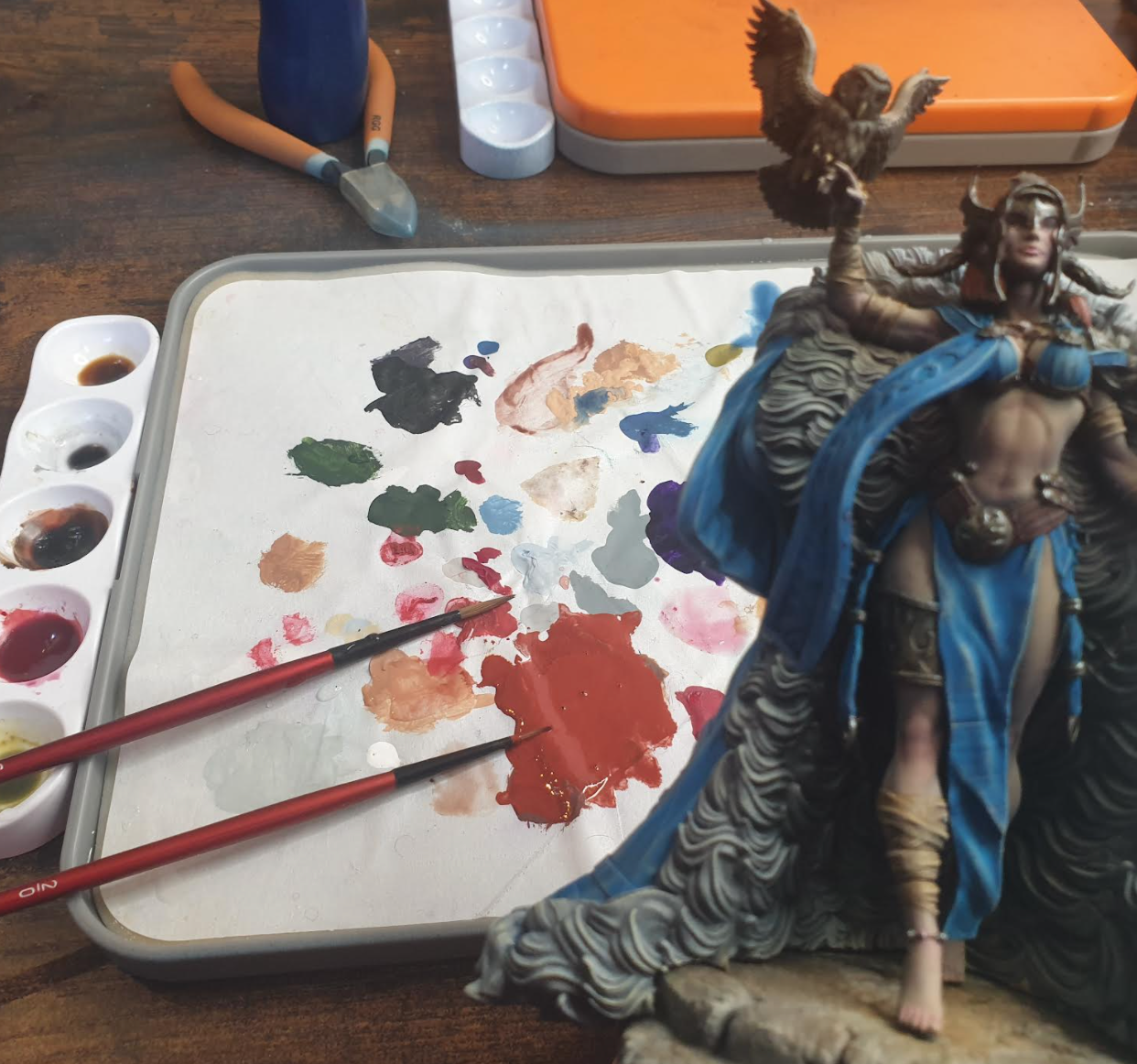
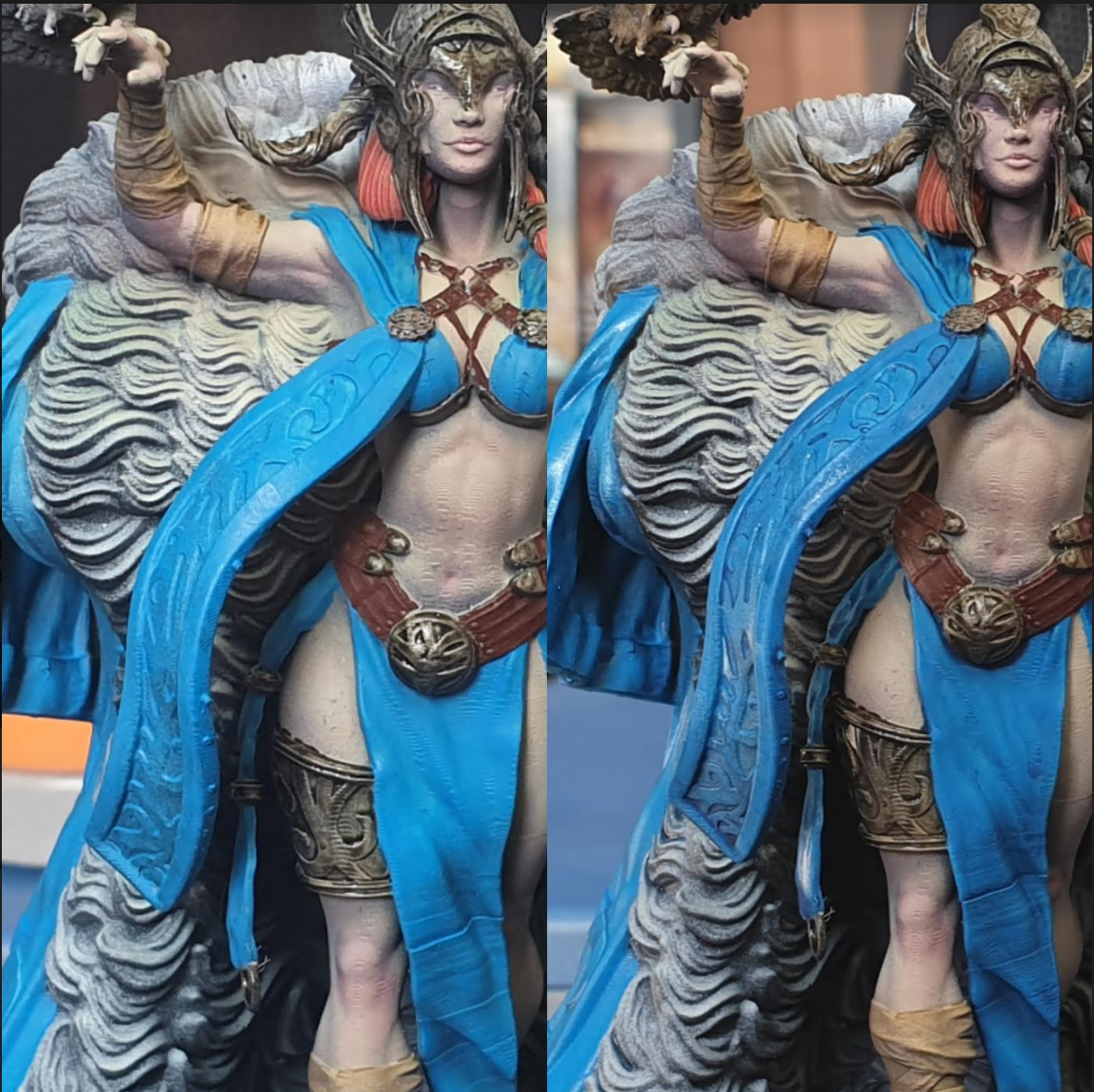
Recess shading often gives you a ‘quick win’ and you can quickly see a big difference before and after. All that blue was very flat, so I used a darker blue wash to run into all the recesses- the cloak has actually been lovingly textured with scrollwork by the team at AVG. Painting Archvillain Games miniatures can be a joy with a quick wash to bring those details back!
Lastly is the key details that need highlights. It all depends on what texture I want. For the metal, I want sharp shiny edges, so I will use my 00.
But for the stonework or cape, a drybrush will offer some good texturing and suggest how organic material ages. The added bonus is that drybushing is speedy! A pale cream or yellow is a universal highlight colour- applied gently enough, it should highlight blue, grey fur, leathers, and the owls all in one!
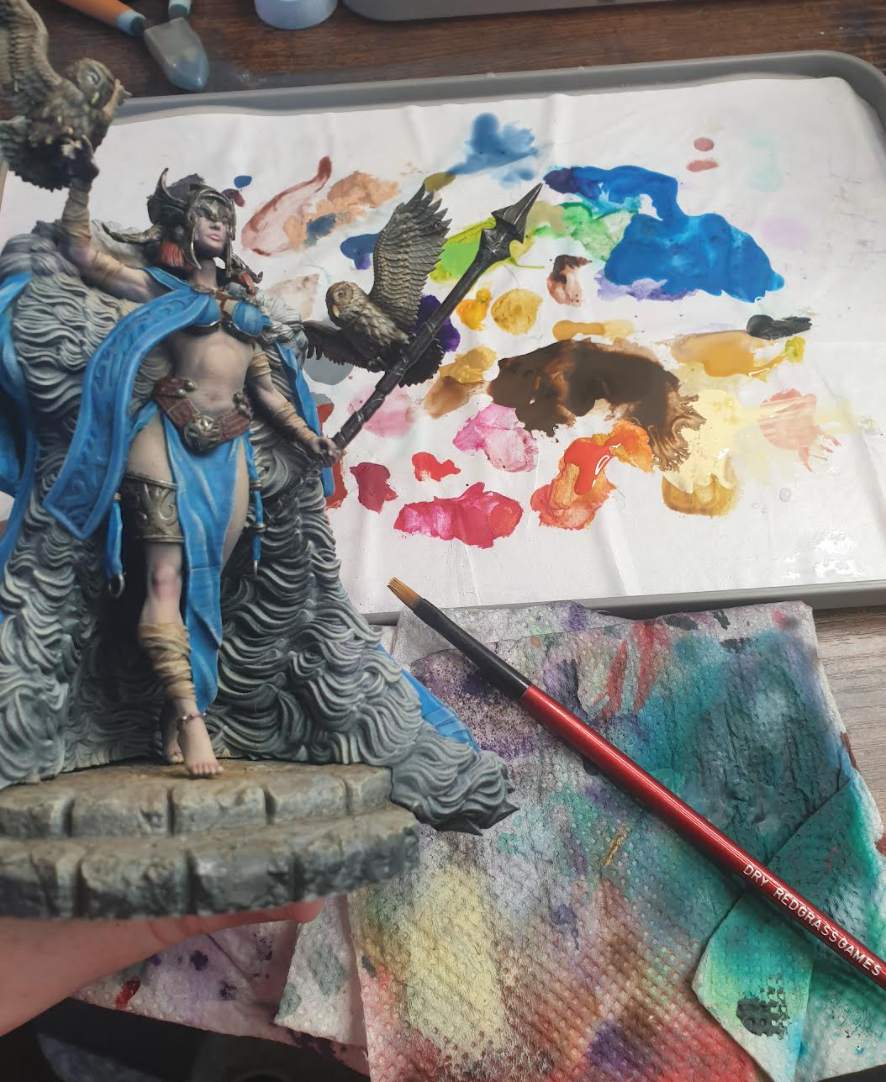
I wiped off most the "wet" pale yellow paint onto an old kitchen towel, and then gently brushed over the raised areas of the stonework and fur cloak for a realistic-looking and fast highlight.
James


The 75mm Frost Giant Queen by Archvillain Games, in all her glory! There is plenty more that could be done, to refine, or really push details like more highlights on the skin. However, that was not the goal of this exercise, and I am very happy with this as it is. This is why you often hear miniature painters say ‘calling it done’, rather than ‘it is finished.’ I learned a lot from this miniature painting process, and most importantly, enjoyed it. After just a couple of painting sessions, with some speedy techniques, I have a nice display piece. And I did not get painting fatigue or give up partway through, so as you can see, large scale miniature painting does not have to be scary! The right tools and – their application – for the job help a lot, too. James.